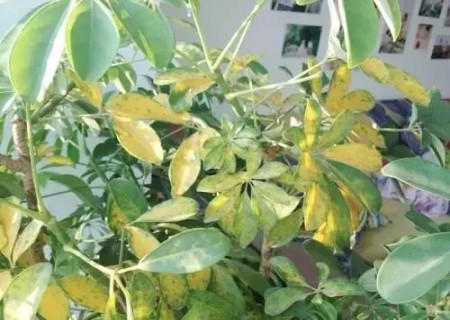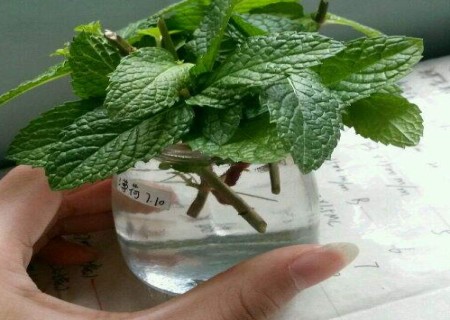Culture methods and matters needing attention of potted Ivy
Ivy is a kind of very popular indoor large-scale potted flowers and trees, especially in the wider living room, study, living room display, elegant style, simple, and with southern flavor, is a beautiful plant shape, regular, world-famous new generation of indoor foliage plants. It can purify indoor air, absorb harmful gases such as benzene and formaldehyde emitted by furniture and decoration, and bring great benefits to human health.
Planting more green plants in the home is a very good choice, both to decorate the home, but also to improve indoor air quality, many plants also have the function of absorbing harmful gases, ivy is one of them. So, how do you raise potted ivy in your home? The following small series introduces the cultivation methods and precautions of ivy.
Ivy transplantation can be carried out in early autumn or late spring, after planting to be pruned to promote branching. The south is planted in the shade of the garden, making it naturally prostrate on the ground or rockery. North more potted plants, potted plants can be bound to a variety of support, traction shaping, summer maintenance in the shade, winter into the greenhouse winter, indoor to maintain the humidity of the air, not too dry, but the pot soil should not be too wet.
1. Loose soil: Ivy is not strict with soil requirements, bears barren soil, likes wet, loose and fertile sandy soil, and avoids salt and alkaline soil. Generally, fertile loose soil is used as potting substrate, such as garden soil and rotten leaf soil mixed equally, or it can be prepared by rotten leaf soil, peat soil and fine sand soil plus a small amount of base fertilizer, or by pastoral soil, 1/4 of plant ash and a small amount of base fertilizer mixed together. Plant ash can not only keep the pot soil loose and breathable, but also have more potassium fertilizer to meet the growth of ivy, but also can be cultivated with water moss alone.
1, the temperature is appropriate: Ivy likes warm, the growth temperature is 20 ° C to 25 ° C, afraid of heat, not cold. Therefore, when placed indoors, it is necessary to pay attention to ventilation and cooling in summer, and it is best to keep the room temperature above 10 ° C in winter, and the minimum temperature should not be lower than 5 ° C.
2. Appropriate amount of light: Ivy likes light and is also more tolerant of shade. If it is cultured under semi-light conditions, the internodes are shorter, the leaves are consistent, and the leaves are bright. Therefore, it is advisable to culture in bright indoor light. If can be in spring and autumn two seasons, choose a period of time to put outdoor shade place, make it see more sunshine in the morning and evening, then vitality is exuberant, leaf green Yan. However, attention should be paid to prevent direct sunlight, otherwise it is easy to cause sunburn.
3. Moderate watering: watering in the growing season should be dry and wet, and the pot soil should not be excessively wet, otherwise it is easy to cause rotten roots and leaves. Winter room temperature is low, especially to control watering, keep the pot soil slightly wet can be. The northern winter climate is dry, it is best to spray the Duchuan once a week with water close to room temperature to maintain air humidity, then the plants appear alive, the leaves are green and shiny.
4. Reasonable fertilization: ivy is cultivated at home, and the pot soil should be cultivated by mixing Sichuan rotten leaves or charcoal soil with 1/4 river sand and a small amount of bone meal. The thin cake fertilizer water is applied once every 2 to 3 weeks in the growing season. Do not fertilize in summer and winter. When fertilizing, avoid partial application of nitrogen fertilizer, otherwise, the flower pattern on the leaf surface of the flower variety, patch, etc. will fade to green. The ratio of nitrogen, phosphorus and potassium is 1:1:1. During the growing season, spray 0.2% potassium dihydrogen phosphate solution on the leaves for 1~2 times, which will make the leaf color appear more beautiful. However, attention should be paid to avoid contaminating the leaves when applying liquid fertilizer, so as not to cause the leaves to scorch.
5, pruning in time: seedlings on the pot (preferably 3 plants per potted plant) to a certain height to pay attention to timely picking, to promote its multi-branch, the plant shape appears plump.
6, set up pillars: in order to make it climb upward growth, add unlimited interest to the beautification of the room space, or for hanging pot cultivation, soft branches and vines naturally droop and float, chic to the extreme, into the four seasons evergreen eternal enjoyment. Therefore, it is a rare hanging vine leaf in modern living room, use trial, performance plug and other places. Usually every one or two years to change the pot.
Notes:
1. Ivy cultivation management is simple and extensive, but it needs to be planted in a place where the soil is moist and the air is circulated.
2, summer maintenance in the shade, winter into the greenhouse winter, indoor to maintain the humidity of the air, not too dry, but the basin soil should not be too wet.
3. Pay attention to pest control. The main diseases are algae leaf spot, anthracnose, bacterial leaf rot, leaf spot, root rot, blight and so on. Leaf rollers, scale insects and red spiders were more serious pests. Remove litter in late autumn or early spring and cut off diseased branches and leaves in time and burn them; spray 65% zinc 600 times solution for protection before onset.
Tips:
Ivy is most commonly planted outdoors on walls or in gardens, or raised indoors in hanging baskets, wherever they are vigorous like geckos climbing like spider webs, and every late spring and summer we will see a green.
Ivy leaves such as maple leaves, each flowering period will open yellowish white flowers, very beautiful and fresh, it has become a popular green ornamental plants. Whether in the outdoor environment or indoor can bring a green, bring hope, especially in the indoor is very eye-catching green plants, can play a role in decoration and beautification, can improve the owner's living environment and freshness.
Time: 2019-05-31 Click:
- Prev

What if the leaves of duck feet turn yellow and black and fall off?
Duck foot wood, also known as goose palm wood, is a common foliage plant. Whether it is a family green plant or an outdoor green plant, duck foot wood is the best choice for green plant conservation. Duck foot wood leaves can not only absorb nicotine released by tobacco. It can also be used to absorb formaldehyde after decorating the house, which is a good plant to purify indoor air.
- Next

Culture methods and matters needing attention of hydroponic mint
In Greek mythology, the Keeper fell in love with the beautiful elf, became jealous and turned the elf into grass trampled by the roadside. The grass exudes a cool fragrance, which is loved by more and more people. This grass is mint. Peppermint grows very fast, both in water culture and soil culture, so it can branch at the right time.
Related
- Fuxing push coffee new agricultural production and marketing class: lack of small-scale processing plants
- Jujube rice field leisure farm deep ploughing Yilan for five years to create a space for organic food and play
- Nongyu Farm-A trial of organic papaya for brave women with advanced technology
- Four points for attention in the prevention and control of diseases and insect pests of edible fungi
- How to add nutrient solution to Edible Fungi
- Is there any good way to control edible fungus mites?
- Open Inoculation Technology of Edible Fungi
- Is there any clever way to use fertilizer for edible fungus in winter?
- What agents are used to kill the pathogens of edible fungi in the mushroom shed?
- Rapid drying of Edible Fungi

